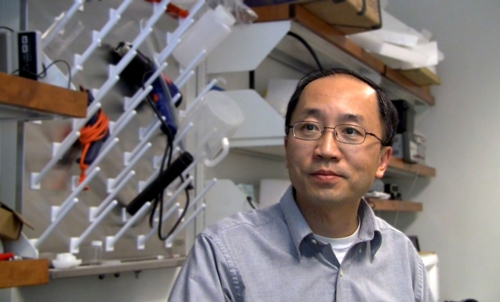A research team led by Qun Zhao from the University of Georgia has discovered that a combination of alternating magnetic fields and iron oxide nanoparticles is capable of destroying neck and head cancer cells in mice in 30 minutes without damaging healthy cells.
 Qun Zhao, assistant professor of physics in the Franklin College of Arts and Sciences, explains his latest research with nanoparticles and hyperthermia cancer treatment.
Qun Zhao, assistant professor of physics in the Franklin College of Arts and Sciences, explains his latest research with nanoparticles and hyperthermia cancer treatment.
According to the research team, it is the first time a laboratory mouse has been treated for this type of cancer utilizing iron oxide nanoparticle-stimulated hyperthermia. The study findings have been reported in the journal, Theranostics. Zhao informed that this research demonstrates that a trace amount of nanoparticles is capable of destroying the cancer cells.
The research team discovered that this treatment easily destroyed the cancer cells that were made entirely up of a kind of tissue called epithelium. In the experiment, the team introduced a small volume of the nanoparticle solution straightaway into the tumor site of the mouse through injection. The mouse was then placed under the influence of anesthesia in a plastic tube encircled with a wire coil, which produced magnetic fields that alter directions 100,000 times per second. The generated magnetic fields then heated the nanoparticles inside the tumor site without damaging the surrounding tissues and healthy cells.
Zhao stated that the study opens the door for further research that might study the utilization of biodegradable nanoparticles for other roles in treating cancer, including carriers for delivering anti-cancer medicines to the tumor site. Under this heated condition, the cancer cells become more sensitive to medicines. Magnetic iron oxide nanoparticles may enhance the contrast in MRI scan for cancer detection. Future studies will require the inclusion of bigger animals prior to considering a human clinical study. One day, these magnetic iron oxide nanoparticles may be used as a single agent to provide therapeutics and diagnosis or theranostics.